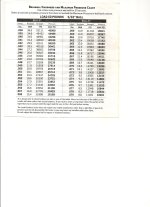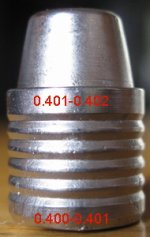The bullet needs to be .001 over groove diameter. The undersized bullet could be your problem. Here is what I would try. Shoot them as cast and, like GPMAN said, use the roll crimper to just take the flare out of the case mouth. Sometimes, the carbide sizer rings will actually squeeze the brass and inadvertantly "resize" your bullet. BUT, you must check to make sure they will still chamber in your particular gun, To do this, take your gun apart and drop the loaded rounds in your barrel. If they fall in, and come back out with ease, then you can shoot them.
To answer your other question about the tin making the bullet smaller. No, tin helps improve fillout and just BARELY hardens your alloy...not much to even worry about. So, try loading some unsized and see if they will chamber. If they chamber, give them a shot and see what happens.
Now, if you still get leading, there is a way to "open up" the mold so it drops slightly larger bullets...which is what may need to be done. We will try that if the next solution fails. Let us know how it goes.
BTW, when loading up your next batch, start with the starting load and work up to the max load. I would do 1 or 2 laods in between min and max for a total of 3 or 4 different loads at different charge weights. The reason: I have had loads lead my barely terribly...but when pushed a little harder, they did not lead at all. Someimes, the higher pressure is need to seal the bore. But, be sure to clean thoroughly after test firing each load. Good luck!


